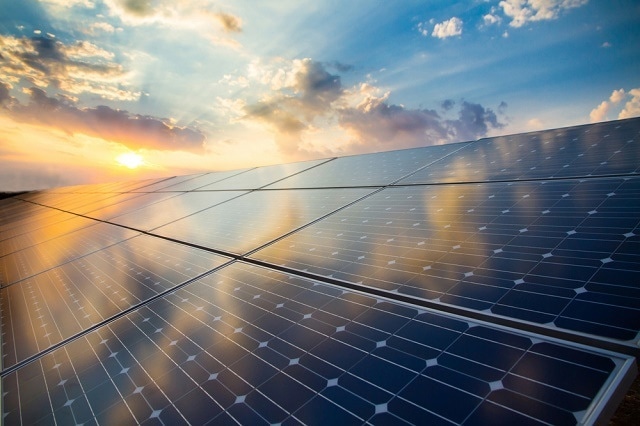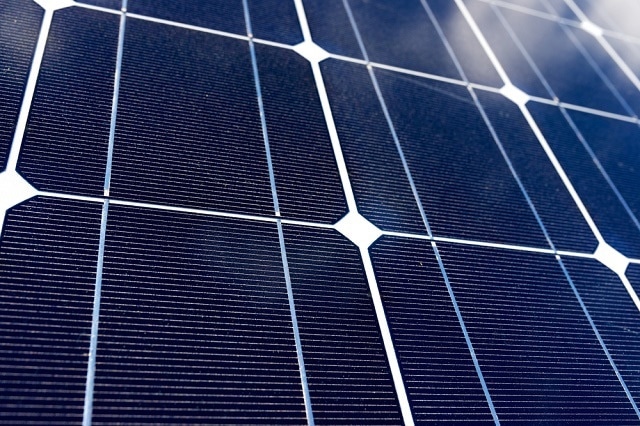
Image Credit: Foxbat | Shutterstock.com
Photovoltaics are one of a number of promising renewable energy technologies, and while they have yet to dominate a large swath of the global energy market, several recent developments show just how revolutionary the technology can be.
Moss Voltaics
Two major sustainability problems plague photovoltaic technology: toxic byproducts and the need for a high quantity of sunlight.
Designer Elena Mitrofanova from the Institute for Advanced Architecture of Catalonia in Spain, is taking on these challenges directly by developing a moss-based photovoltaic system. The project is part of a growing trend called biophotovoltaics, which uses plant photosynthesis to harness solar energy.
Thanks to symbiotic bacteria in a soil-less medium, the moss in the voltaic "cell" generates electricity via photosynthesis. The power generation process starts with the moss sending organic compounds into the medium, which is composed of hydrogels and conductive carbon fibers. The bacteria in the substrate is nurtured by these compounds, generating free electrons as a result. The electrons are then harnessed by the system as electricity.
The system may be set up in either a parallel or series circuit and installed on the sides of buildings. Mitrofanova explained that she wants to design the moss voltaics as a scalable system, possibly for urban areas. The bricks form a protective shell for the moss, shading them from sunlight while permitting a favorable, moist microclimate to flourish within.
Currently, Mitrofanova's system is able to generate just 3 watts with 16 modules, but future technology could reduce energy needs and boost energy efficiency, making her system viable.
Solar Windows
Science and technology giant Merck recently announced a collaboration that could revolutionize how we see the world from the inside of buildings.
The German conglomerate released a statement in mid-March that outlined the partnership with photovoltaic producer Polysolar and innovation center CPI, to develop windows that could both harvest power from sunlight and assistant in interior temperature control.
The windows would use transparent solar glazing panels that are adaptable, lightweight, and not cost-prohibitive. The panels will use organic photovoltaic technology to both maximize natural light entering a building and lower building energy usage.
In a statement announcing the partnership, a CPI spokesperson said the collaboration will also seek to develop sustainable manufacturing practices for the technology. The partners will also seek to present required lifetimes, dimensions, and price points for the technology.

Image Credit: Pedrosala | Shutterstock.com
State of the Art Materials
Two of the major obstacles facing the mass adoption of photovoltaic are a prohibitive level of efficiency in converting sunlight into electricity and cost.
Physicists at Salford University in the UK are currently working on a $5.7 million project dedicated to resolving both of those issues.
The CHEOPS (Cost and Highly Efficient Photovoltaic Perovskite Solar cells) project is trying to improve efficiency and cut costs using perovskite photovoltaics, a class of hybrid materials with a crystal structure. Project scientists say these state-of-the-art materials will allow for the production of extremely efficient solar cells in a very simple, low-cost manner.
In addition to boosting the efficiency of a simple photovoltavic cell, CHEOPS engineers will also be building tandem cells - with a perovskite cell above a typical silicon-based cell. These kinds of tandem cells can harvest a wider spectrum of light than a single cell, which should lead to a further rise in efficiency - approaching 30 percent according to a report from The Engineer.
In the long run, existing manufacturing processes used for silicon devices might need only minor modification before being employed to create tandem cells, as the perovskite level would just be added over the standard cell as an “efficiency booster.”
References and Further Reading
These Biodegradable Bio-Photovoltaics Use Moss to Generate Electricity
Photovoltaic Windows: Energy Efficient and Energy Generating
Salford University Physicists to Develop Highly-Efficient Perovskite Photovoltaics
Disclaimer: The views expressed here are those of the author expressed in their private capacity and do not necessarily represent the views of AZoM.com Limited T/A AZoNetwork the owner and operator of this website. This disclaimer forms part of the Terms and conditions of use of this website.